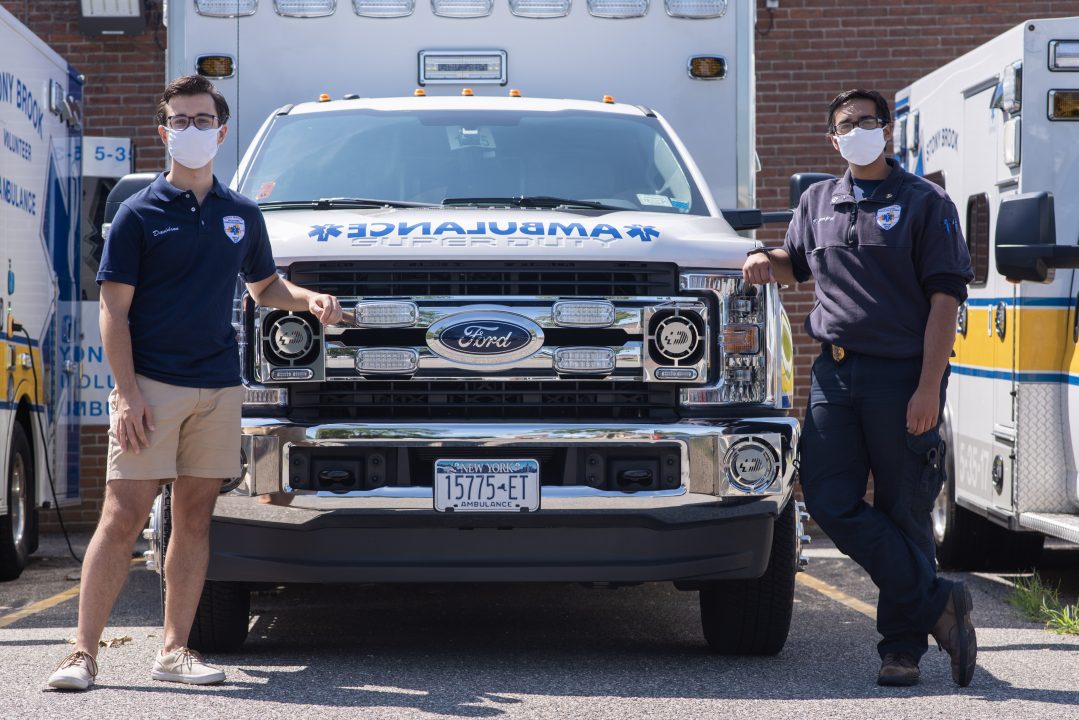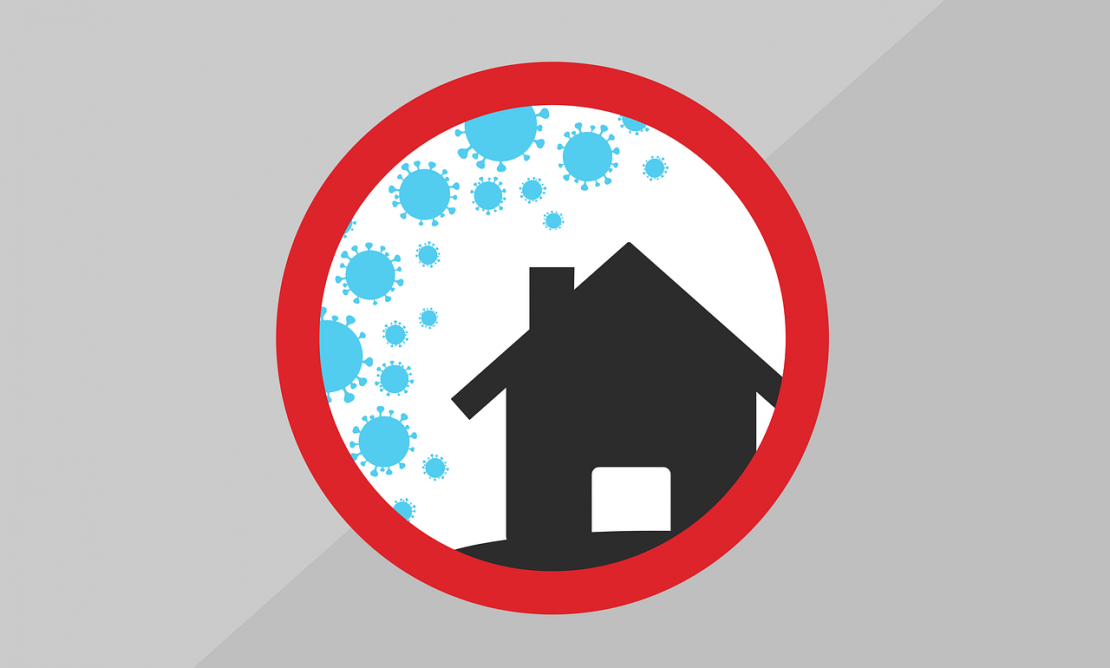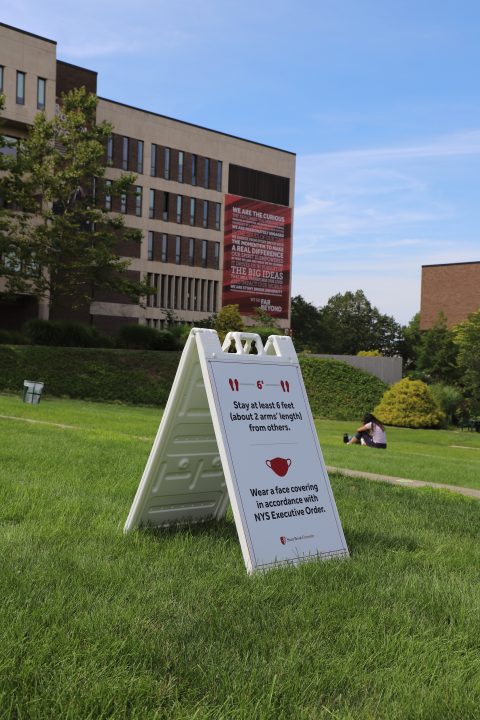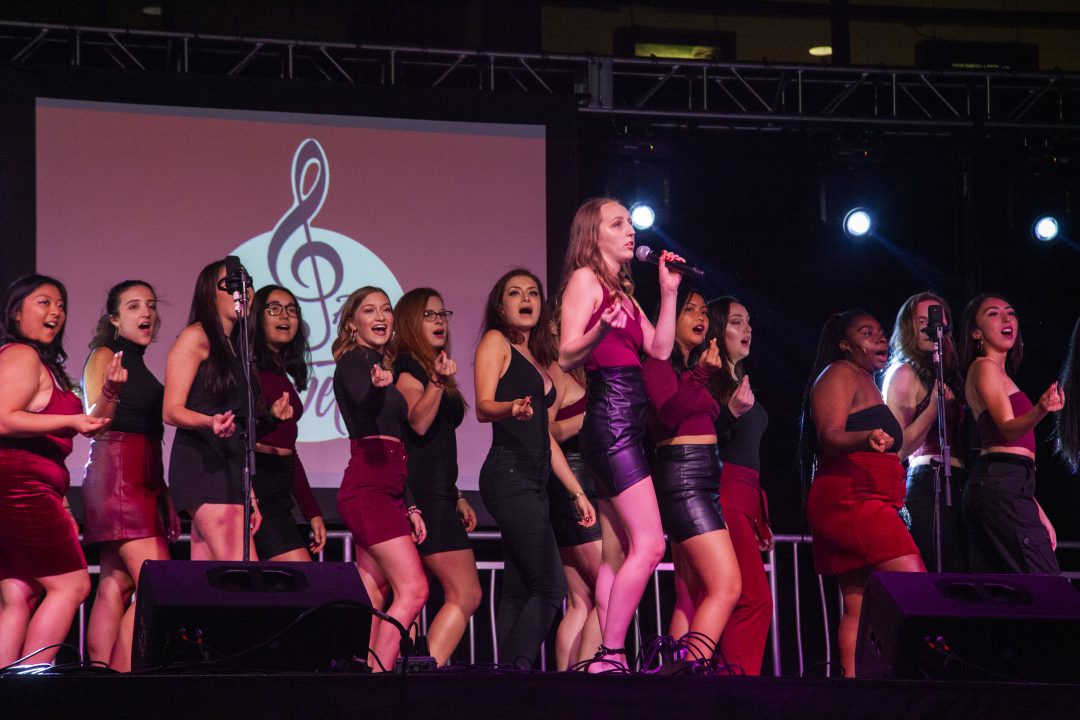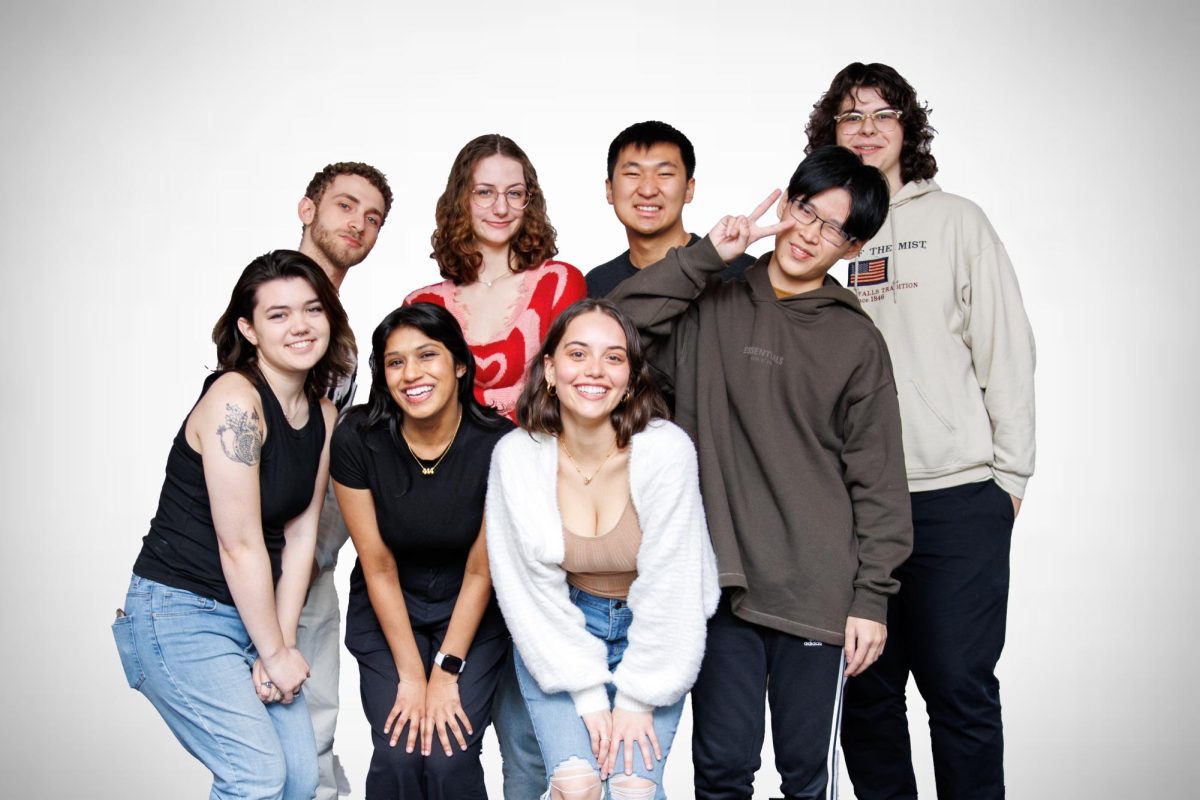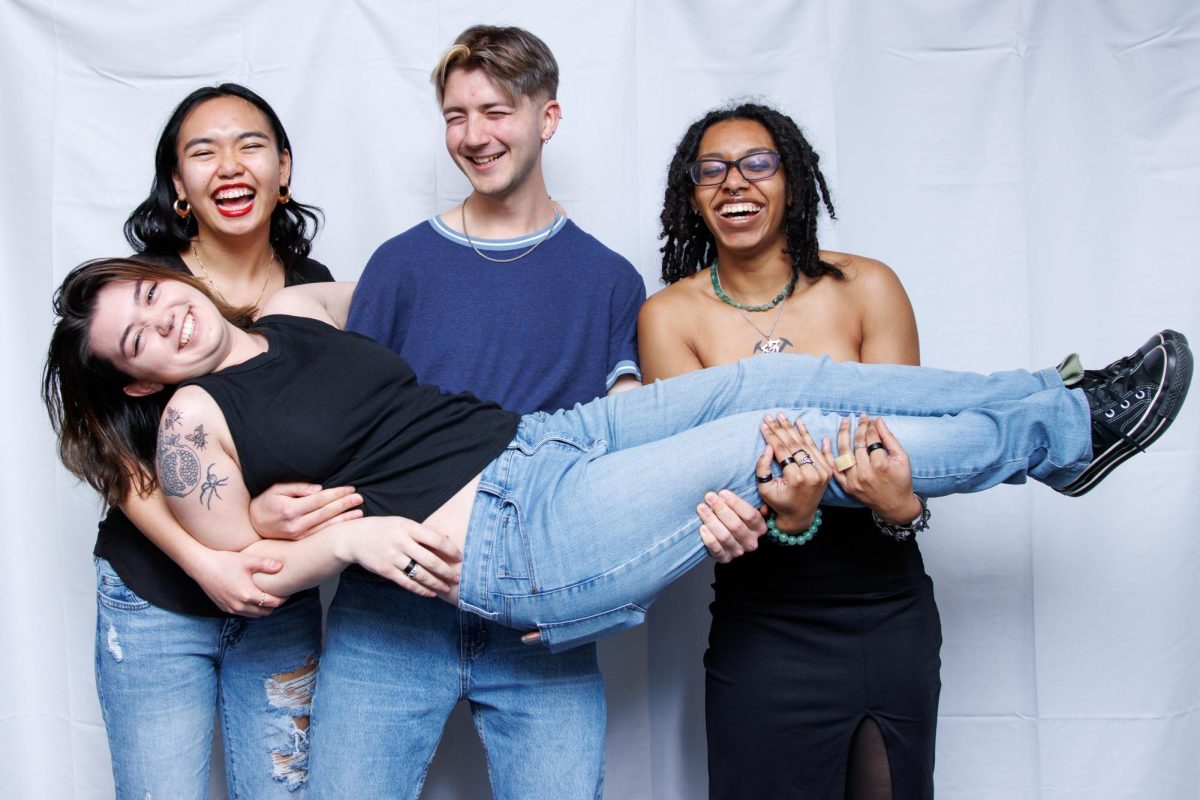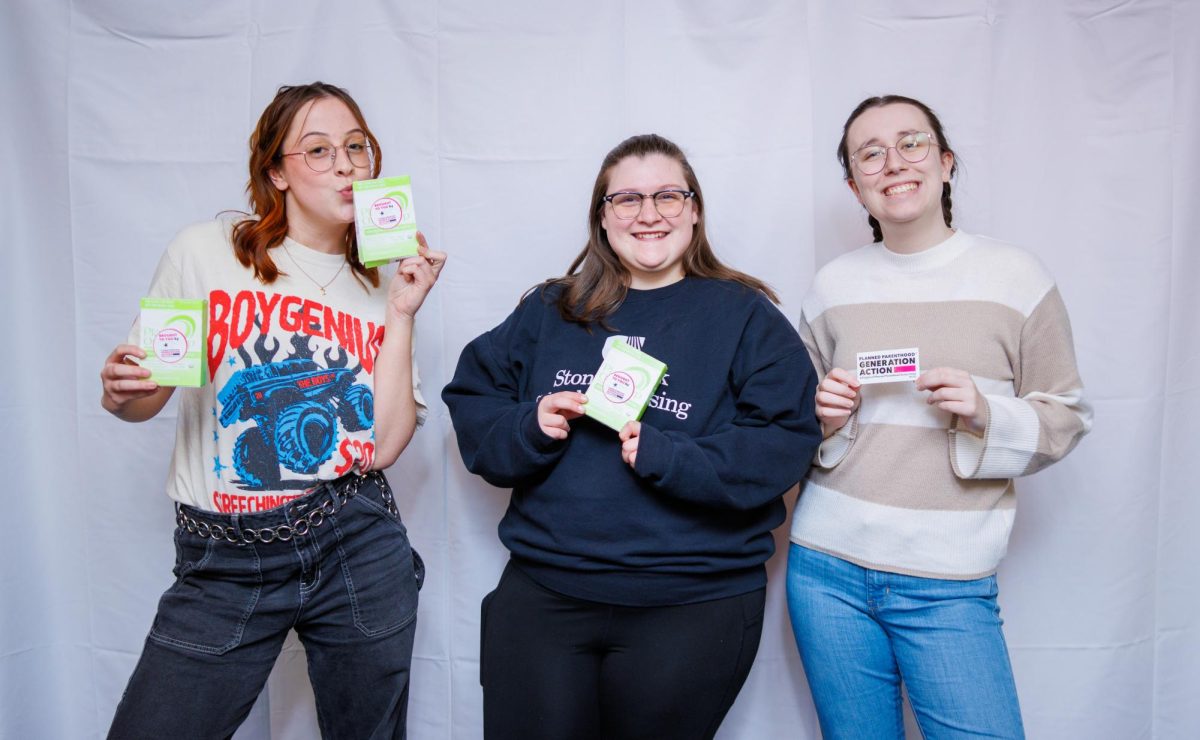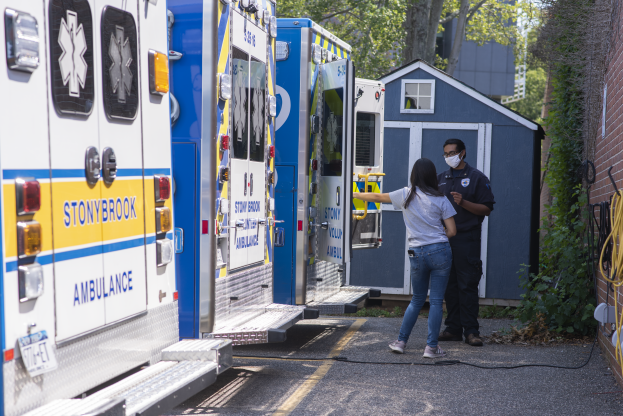
When COVID-19 infection rates in New York started to increase in March and the Stony Brook University campus lost most of its residential student population, some students stayed behind.
The Stony Brook Volunteer Ambulance Corps (SBVAC), the university’s collegiate emergency medical services (EMS) agency founded in 1970, is made up of 39 trained student volunteers. The organization, which usually responds to 900-1000 calls a year, including helping overwhelmed local EMS, became essential workers in a global health crisis.
“I chose to stay on campus as I was serving as SBVAC’s First Assistant Chief at the time and I felt a responsibility to serve throughout the crisis,” Mikayla Katz, who graduated in the spring with a degree in biology, said. “Going home hadn’t been an option in my mind as I knew I should be there. Had there been any other serious events, or changes with the pandemic, I wanted to make sure I was right there so I could assist as needed.”
Although some SBVAC members left campus, 22 members like Katz volunteered to serve the campus after much of the resident population evacuated. Some even opted to stay on campus, though that meant they couldn’t take advantage of the university refund offered to students who were forced to vacate campus.
“They’re putting themselves at risk for contracting a potentially fatal disease,” Ahmed Belazi, SBVAC’s faculty advisor and Director of Planning & Staff Development for the Division of Student Affairs, said. “And that’s a choice that all healthcare providers and other frontline workers are making, and it really does service to just describing how selfless and generous and civic these members are.”
SBVAC officals said that with the resident population greatly reduced, they recieved around one-third the amount of calls. Because their were fewer SBVAC members on campus, the remaining volunteers took on extra shifts to make sure all the emergancies on campus were addressed.
“We expected a reduction in the number of members that we would have to staff our alarms,” Nikhil Bamarajpet, a senior biology major and SBVAC president, said. “Our entire weekly shift dock during the pandemic was filled to capacity… So we had 24/7 coverage during the pandemic, which was insane.”
COVID-19 changed SBVAC’s campus operations. SBVAC’s responses to emergency calls, which included four people before the pandemic, were decreased to two — the driver and lead technician. The organization also increased the use of personal protective equipment (PPE), like N95 face masks and surgical masks, to ensure the health of their members and the campus.
“We had to rethink how we approached calls of all natures,” Kevin Quintero, first assistant chief and senior biology major, said. In the spring semester, he served as SBVAC’s captain and training officer. “Our greatest fear at the time was: What if we start losing our members? Not only fearing for their health, but also for the well-being of our community.”
Zachary Davidson, who graduated last semester and is SBVAC’s current Chief of Operations, recalled an incident where a student was struggling with mild respiratory symptoms and was distressed about possibly having contracted COVID-19.
Before COVID-19, patients with flu-like symptoms wouldn’t be cause for much concern for SBVAC members. “Those are the kinds of things that we can do with our eyes closed, because we do them so often,” Davidson said. “But now you look at those kinds of patients with new eyes, where you’re worried much more about things that you wouldn’t have been normally.”
SBVAC members volunteer up to 12 hours a week. Many are also regular students, with full time class loads and often part-time jobs. Bamarajpet said that being both a student and medical provider signed him up for a busy, but interesting, college experience.
“During the thick of the pandemic, that’s when I also had finals,” Bamarajpet said. “I was volunteering at SBVAC, then I also volunteer at Central Islip and I was also picking up the leadership position here at SBVAC. I also had a part time job at the Division of Information Technology which I had to come in for. And so there was a lot of going back and forth.”
Davidson said that SBVAC members being fellow students help them connect with their patients and better reassure them that they would be well taken care of. He said it’s one of the main differences between the care SBVAC gives and other EMS agencies.
“I think we have a tighter bond with the patient population sometimes because we share the common experience of the students,” Davidson said.
Bamarajpet and Davidson said that after the campus closed, it was harder for members to interact with each other. Located on the west side of the West Campus, SBVAC headquarters, usually a social gathering place for members to relax in between shifts and classes, had become limited to essential personnel only.
“All our members are really close,” Davidson said. “I met a lot of my closest friends here when I joined as a freshman and we spent a lot of time together at our headquarters, on calls and in our personal lives. And so you miss out on people coming down to watch a movie or to hang out.”
With most of the world on lockdown, the local Stony Brook community made sure they showed SBVAC their appreciation.
Davidson recalled walking to headquarters one day and finding a sign outside that read “Heroes Work Here.” The Three Village Church in Setauket showed their appreciation for SBVAC by providing them home cooked meals for several months during the pandemic. SBVAC also received gift cards to several restaurants. Bamarajpet said the outreach from the community was “incredible.”
“I think those sorts of gestures were really important in just letting them know that people were there with them, and that they supported them and were thinking of them,” Belazi said. “I think that went a long way for a lot of the members.”
SBVAC collaborated with the university’s Center of Prevention and Outreach in July to make a video for students in residential halls about their experience helping people with COVID-19, and about the danger of the virus.
“Informing our student population about [COVID-19] and making sure they’re aware [COVID-19] is still a thing is an important part of what we do,” Bamarajpet said.
SBVAC, who do not charge for their ambulance service to the hospital, are partnering with Student Health Services this fall to give residential students who are discharged from the hospital after being infected with COVID-19 free ambulance rides back to their dorm.
“I think roles like EMTs and roles that SBVAC members play are great examples of how we hold a society together during a period where it was a lot more difficult to keep society together,” Belazi said.
SBVAC officials said that thankfully, the organization has not yet received many calls relating to respiratory illnesses or COVID-19 during the fall semester. Students interested in joining SBVAC can visit their website.
Sara Ruberg contributed reporting.







